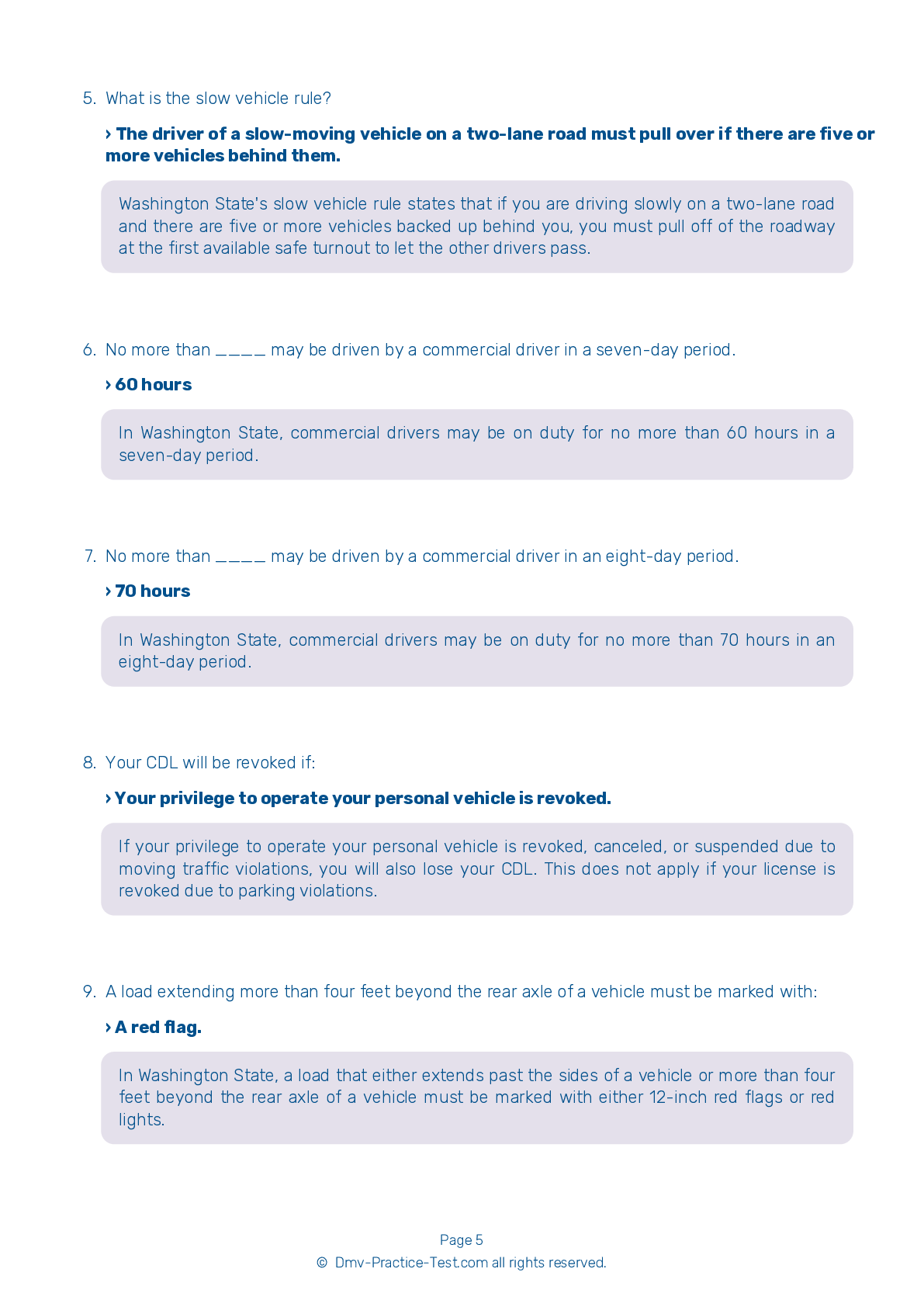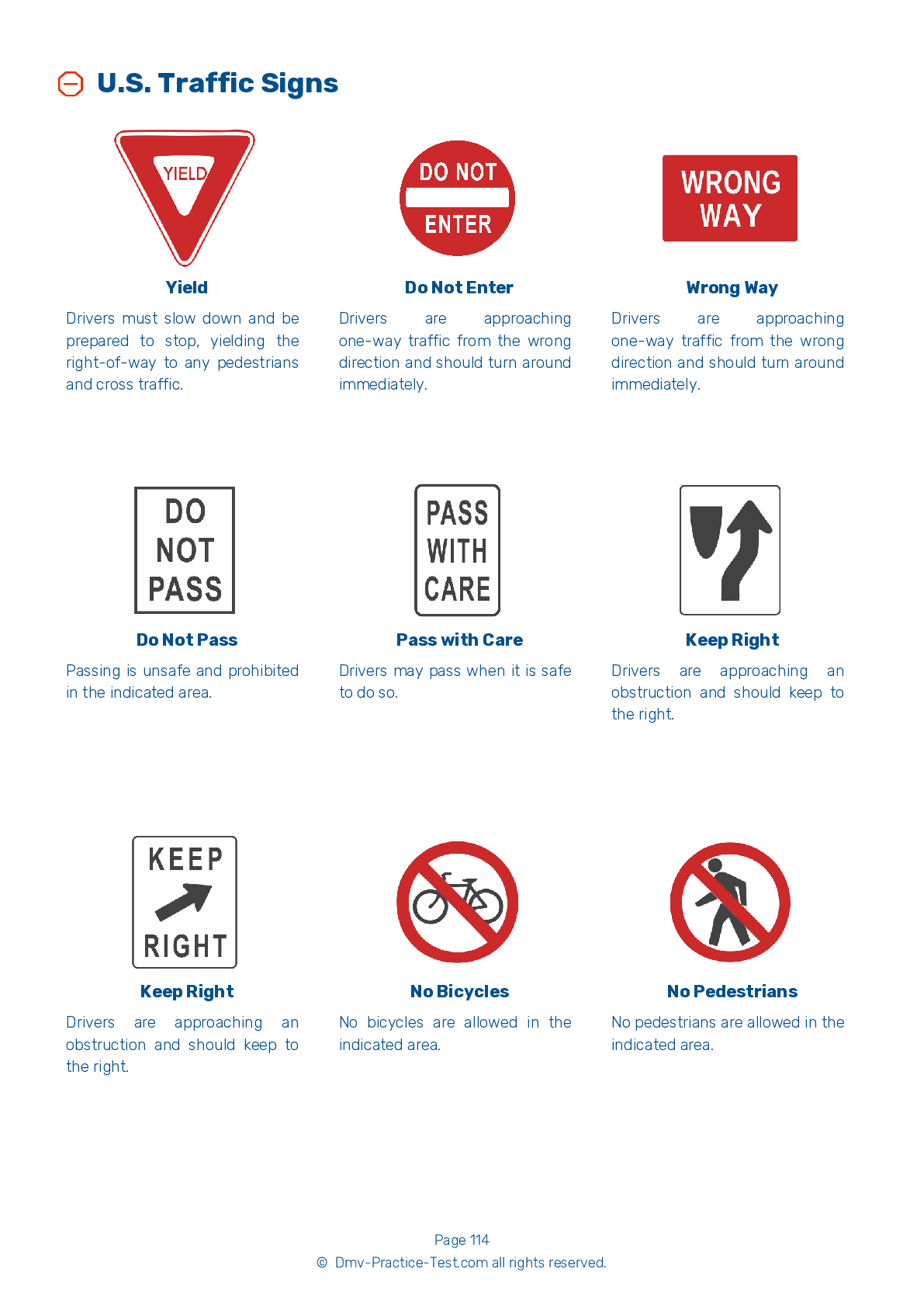Air Brakes Endorsement Test | Washington 2025 #2
Train for FREE online with our Washington CDL air brake test. The official exam test consists of several obligatory parts, with all of them checking your knowledge of different blocks of road rules. If you need to obtain a WA Class A/Class B driver license in 2025, practice as much as possible. Free sample tests published on our website will help you check and improve your knowledge and boost your grades. Please bear in mind that the requirements for CDL may vary from state to state.
1 . Air pressure should build up in a single air system within:
In single air systems, air pressure should build from approximately 50 to 90 psi within three minutes.
2 . Lights that indicate that anti-lock brakes are not working are:
Vehicles equipped with Anti-Lock Braking Systems (ABS) have yellow malfunction lights to indicate issues in the braking system.
3 . Why should you regularly drain the air tanks?
Compressed air usually contains a certain amount of moisture and compressor oil, which can build up in the air storage tanks and damage the brake system. The tanks should be drained to clean out these accumulations. On a tank with a manual drain valve, draining should be performed at the end of each day of driving.
4 . Brakes out of adjustment will:
Brakes out of adjustment will fade before those that are properly adjusted. Brake adjustment must be checked frequently to help prevent brake issues.
5 . A low air pressure warning signal should activate:
In an air brake system, a low air pressure warning signal must come on if air pressure in the tanks falls below 60 psi. This warning signal may come in the form of a light, a buzzer, or a wig wag.
6 . During an applied leakage test, the maximum leakage rate for a triple combination vehicle is ____ in a minute.
It is important to know the maximum air loss rate that is safe for your specific vehicle. A triple combination should have a leakage rate no higher than 6 psi in a minute during an applied leakage test.
See the exact questions that will be on the 2025 Washington DMV exam.
99.2% of people who use the cheat sheet pass the FIRST TIME
Lillian MCcranie explains how our CDL study guide was helpful in passing the exam and recommends it to everyone.
Cameron tells us how he purchased the CDL exam, and found it to be a useful tool which helped him pass the exam and find a job.



